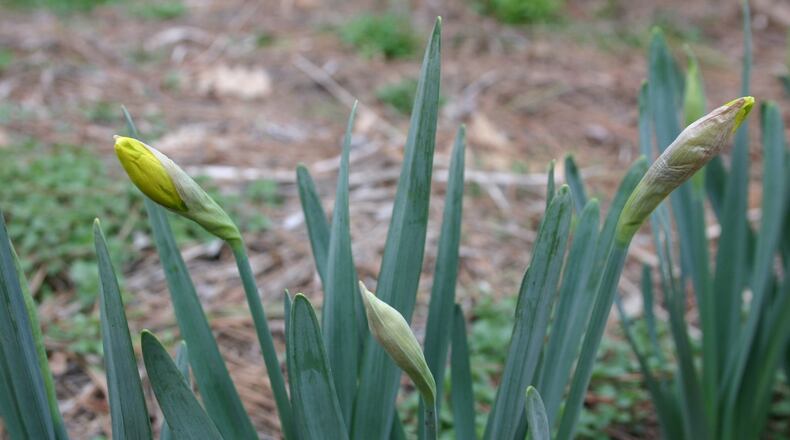Q: My daffodil foliage is 10 inches high, and flower buds are emerging. Is now the time to apply fertilizer?Faith Williams, Gwinnett County
A: It's best to fertilize when foliage is 1 to 2 inches tall or about six weeks before flowering. An alternative is to use a single fall application of a slow-release fertilizer at planting and each fall thereafter. Bone meal is often recommended for bulbs but the phosphorus from bone meal is released slowly and does not move through the soil very well. Honestly, daffodils and tulips rarely need much fertilizer to bloom beautifully.
Q: I planted Wando and Alaska peas in my garden this week. But I see on your garden calendar that I am weeks too early. What is your opinion for sandy-soiled Burke County?Jennifer Macuch, Waynesboro
A: I think you are fine. My garden calendar is aimed more at Atlanta gardeners than Middle Georgia folks, who enjoy milder winters. For us, mid to late February is great pea planting time.
Q: I removed several trees, and now the sun shines on the front, making it way hotter. What is a super fast-growing evergreen tree I could plant to block the sun?Vicki Freeman, email
A: I know you want shade in the summer but consider that you may want more sunshine in the winter to keep the house warmer, so don't rule out deciduous trees. Much depends on how tall you want the tree to grow. Tulip poplar is fast growing but grows so tall that it is too big for most landscapes. Maples are a good choice. Avoid silver maple, but there are several red maple varieties that do well here.
If you want the fastest growth from a tree, prepare the soil before you plant it. Thoroughly loosen the soil ten inches deep and six feet in all directions from where the trunk of the tree will be. Wash or manually remove as much soil as you possibly can from the young tree root ball. It’s fine for the roots to be bare for a few minutes. Untangle the roots and spread them in all directions from the trunk in the center of the area you loosened. Cover the roots with native soil so that the area where the trunk flares out to become the roots is just above the soil level. Mulch the entire area with a layer of arborist wood chips 3 inches deep. There is no need to add fertilizer or soil amendments to the soil before you plant. Water appropriately in summer and you’ll have the fastest-growing tree possible.
Q: I have five pounds of very old coffee beans found in an old closet at church. They are over two years old. Is it possible to till them into the soil in the spring as an amendment?Starlyn Baxter, Conyers
A: I see no reason you could not add the beans to your garden. They will not acidify the soil and I can’t imagine that any caffeine left in the beans would affect nearby plants.
About the Author
The Latest
Featured

